American comic-book enthusiasts are accustomed to reading the latest installments of their favorite titles on a monthly basis. Occasionally, a comic publisher might print issues weekly or biweekly as part of a limited-duration marketing campaign, but by and large, fans must wait a month to find out what will happen next following the previous chapter’s cliffhanger ending.
Those in Great Britain, however, have historically had quite a different experience. Many British comics have been presented as weekly anthology magazines featuring multiple standalone or serialized tales based on a variety of genres and franchises. The content is often diverse, ranging from adventure, superhero, and science fiction to stories involving supernatural and cartoon characters. Notable examples include The Beano, Tiger, Lion, The Eagle, TV21, TV Comic, Valiant, Countdown, Warrior, Viz, Look-In, 2000 A.D., Planet of the Apes Weekly, Star Wars Weekly, and many more.
U.S. Spider-Man fans have followed the friendly neighborhood wall-crawler from one month to the next in the pages of The Amazing Spider-Man, Spectacular Spider-Man, Web of Spider-Man, Spider-Man 2099, Ultimate Spider-Man, and other titles, with each monthly issue focused on the saga of Peter Parker or one of his fellow Spider-Men. Brits, however, have had a very different experience, particularly in the 1970s and ’80s, when Marvel UK reprinted its American Spider-Man titles as a long-running weekly series, published four or five times per month. This followed the success of another British reprint comic, The Mighty World of Marvel, which first hit stands in 1972—the company’s inaugural effort to repackage its own U.S. storylines for British audiences, rather than licensing them out for reprinting to other publishers.
The weekly publishing schedule resulted in several differences from the monthly U.S. versions. For one thing, since each single American issue was expanded to four or five chapters, only a half-dozen pages or so of each U.S. story could appear per issue. For another, new covers had to be commissioned, and often new splash pages as well, in order to keep readers up to speed on prior installments they might have missed. But it also meant that additional material was required to fill up the remaining magazine pages. Therefore, Marvel UK began serializing non-Spider-Man tales in each issue.
Marvel UK’s reprinting of American Spider-Man lore began with Spider-Man Comics Weekly, a black-and-white series that debuted in 1973. The A4-sized periodical, which initially reprinted Spider-Man stories published during the 1960s, spanned a devilish 666 issues from 1973 to 1985.
Surviving several name-changes and mergers with other magazines along the way, the series offered backup tales involving Thor, Iron Man, the X-Men, Doctor Strange, Moon Knight, The Invaders, Captain America, The Avengers, The Fantastic Four, Daredevil, The Hulk, The Defenders, and other characters, as well as brand-new stories featuring Captain Britain, in which Spider-Man guest-starred.
Spider-Man Comics Weekly lasted for 157 issues, then was re-titled Super Spider-Man With the Super-Heroes (issues #158 to #198), Super Spider-Man and the Titans (#199 to #230), Super Spider-Man and Captain Britain (#231 to #254), Super Spider-Man (#255 to #310), Spider-Man Comic (#311 to #333), Spectacular Spider-Man Weekly (#334 to #375), Spider-Man and Hulk Weekly (#376 to #417), Spider-Man and Hulk Weekly Team-Up (#418 to #449), Super Spider-Man TV Comic (#450 to #499), Spider-Man (#500 to #552), Spider-Man and His Amazing Friends (#553 to #606), Spider-Man once again (#607 to #633), The Spider-Man Comic (#634 to #651), and finally Spidey Comic (#652 to #666).
Following the weekly magazine’s cancellation, Spider-Man reprints appeared in a series of U.K. annuals, specials, and pocket-sized digests. The comic was then relaunched in 1986 as Spider-Man and Zoids, which lasted for 51 issues, followed by The Complete Spider-Man (24 issues, launched in 1990) and The Exploits of Spider-Man (40 issues, starting in 1992), the last of Marvel UK’s self-reprinted Spider-Man titles. Panini UK has continued to reprint Marvel’s U.S. stories in The Astonishing Spider-Man since 1995, along with a few other Spider-Man titles aimed at varying age groups.
That’s a lot of titles for one character. But as William Shakespeare might have said—had the Bard written comic books (as sonnets in iambic pentameter, no doubt)—a spider by any other name would still bite as radioactively.
In the 1980s, the British Spider-Man run underwent a significant change, as the United Kingdom’s reading audience had begun to skew younger by 1984. Since the American Spider-Man comics of that era had grown darker and were aimed at a more adult audience, this presented a problem for Marvel UK, which opted not to present such mature material to children in its weekly magazine.
Rather than using the grimmer storylines from The Amazing Spider-Man, in which Peter Parker had begun wearing his new black costume instead of the traditional red and blue, Marvel reprinted kid-friendly Spider-Man comics originally given away in U.S. newspapers, followed by tales from Spidey Super Stories, an American comic aimed at children ages six to ten, based on the version of the character as presented on the Children’s Television Workshop’s popular TV series The Electric Company.
Marvel child-proofed its backup stories as well, by presenting TV Comic’s The Dukes of Hazzard strip, Marvel’s The Further Adventures of Indiana Jones, and an adaptation of Disney’s The Black Cauldron, alongside stories selected from Marvel’s Star Comics imprint, such as Wally the Wizard, Fraggle Rock, and Star Wars: Ewoks. Yes, a long time ago, your friendly neighborhood Spider-Man did, indeed, briefly pass through the galaxy far, far away. Amazing, eh? Spectacular, even.
Concurrent with Marvel’s Return of the Jedi Weekly issues #125-130, Spidey Comic—which was aimed at young children—offered serialized reprints of Ewoks issues #2 and #3 (“The Rainbow Bridge” and “Rites of Power,” both written by David Manak) in issues #661-664 and #665-666, respectively. As the end of Marvel UK’s Star Wars line drew near, the company also serialized Jo Duffy’s “The Apprentice,” from the third American Star Wars annual, in Spider-Man and Zoids #15-22.
Created by Tomy, a Japanese toy manufacturer, the Zoids franchise was initially conceived as a series of model kits, though the company eventually expanded the line to include action figures, video games, anime, manga, and more. A tie-in strip was spun off in Britain’s Marvel Super Heroes Secret Wars comic line, which reprinted most of the Secret Wars and Secret Wars II sagas, before Marvel combined Zoids with Spider-Man in their own comic book magazine. Den of Geek!’s James Stansfield discussed the Zoids series at length in his informative 2013 article “Revisiting Marvel’s Spider-Man and Zoids,” which you can read here.
Spider-Man and Zoids featured early work from acclaimed writer Grant Morrison. His “Black Zoid” storyline set the groundwork for several of his more celebrated stories, such as his runs on Doom Patrol and Animal Man. It incorporated plots and stylistic approaches similar to those of Doctor Who, as well as the Terminator and Alien franchises, with a dose of Transformers thrown in for good measure. The Zoids saga, which has never been reprinted (reputedly due to unresolved rights issues), featured red and blue robots originally created to provide gladiatorial entertainment, now locked in an unceasing war with one another ever since the decline of their organic masters.
Morrison’s “Black Zoid” storyline (a tale of revenge, hatred, and seething anger), along with Duffy’s Star Wars story “The Apprentice” (about Luke Skywalker failing to prevent a Jedi-hopeful named Flint from falling to the Dark Side), helped to return the British Spider-Man comics to the more mature level they had previously occupied, even if the presence of George Lucas’s lovable Ewoks negated some of that progress.
Reading the entire Marvel UK Spider-Man run can be a long, strange trip, ranging from classic superhero storylines of the 1960s and ’70s to dumbed-down children’s fare of the 1970s and ’80s, from warring robots and Indiana Jones to cutesy space teddy bears, Bo and Luke Duke, and Jim Henson’s Fraggles. But if you ever find yourself in the dark recesses of a comic shop that specializes in foreign reprints, and you notice some decades-old A4-sized issues hanging up on the walls, keep your eyes open for that familiar splash of red and blue swinging from one corner of the cover to another.
For wherever there’s a hang-up, you’ll find Spider-Man.

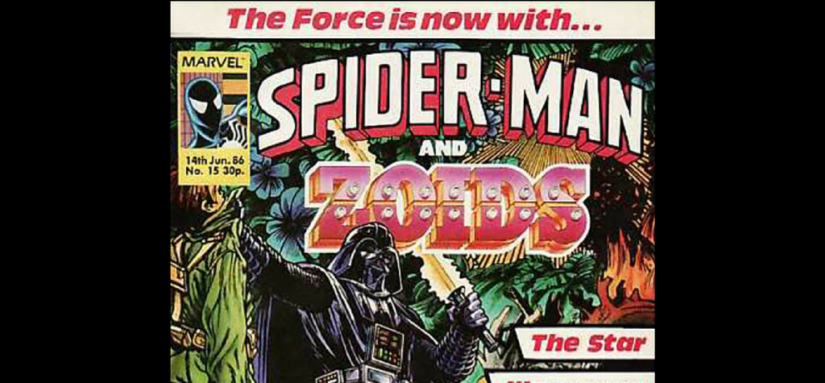
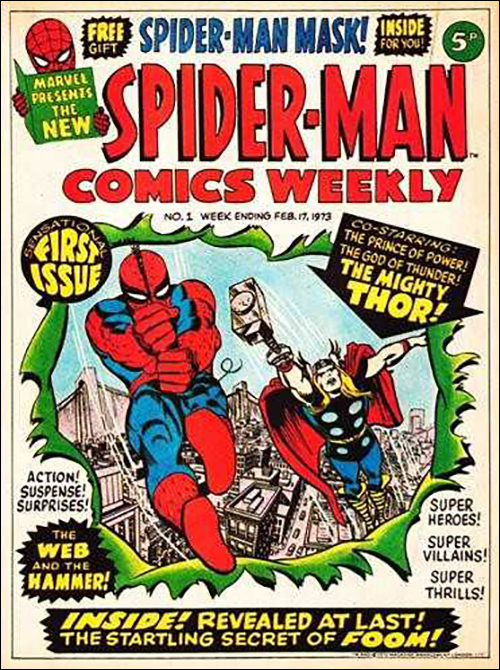
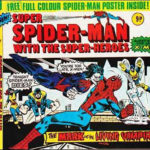
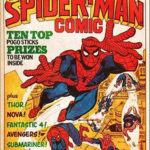
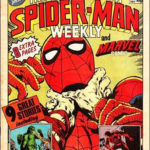
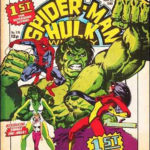

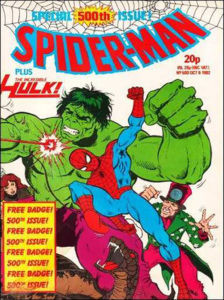
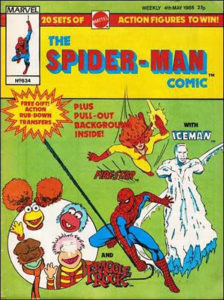
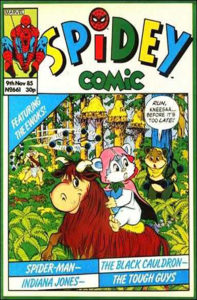
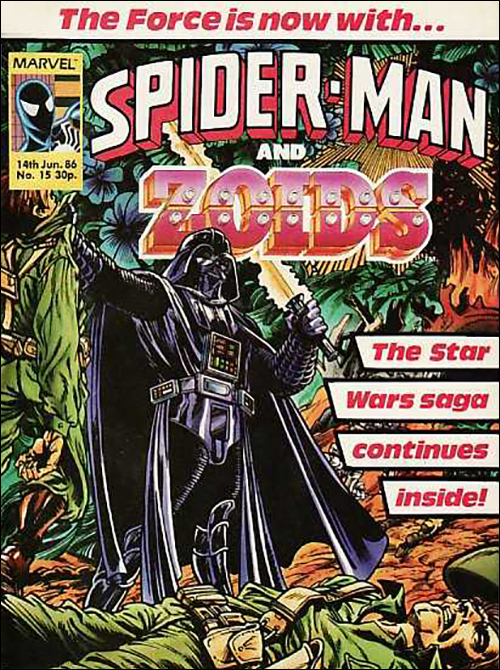
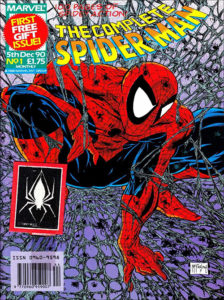
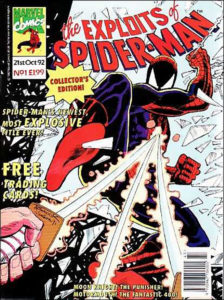
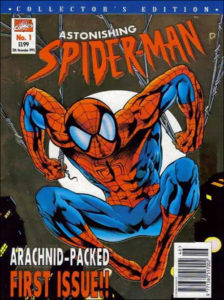
Comments are closed.